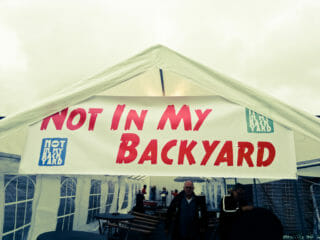
As we’ve discussed time and time again, California’s voter-passed cannabis legalization initiative, as well as all subsequent statutory and regulatory additions to that law, maintains local governments as the ultimate arbiters of whether and how commercial cannabis operations can take place within any given county or municipality in the state. The most prominent exercise of that authority exists through local permits and licenses (which are now a prerequisite for any state license), and land use laws, such as zoning ordinances. The starting point for any property owner considering a cannabis use on the property is the applicable zoning law and the local ordinance on cannabis, if any. Recently, property values in appropriately zoned places have appreciated accordingly.
But as the new laws are implemented, we are seeing the limits of local authority when it comes to zoning for cannabis operations. In one recent example, a group advocating for a moratorium on marijuana in San Mateo sued the County of San Mateo for opting to issue a “negative declaration” stating that its new cannabis ordinance would not have any significant impact on the environment, rather than engaging in the more rigorous option of preparing a full environmental impact report to study the effects of the proposed activity. The ordinance generally prohibits all cannabis activity except cultivation in greenhouses and transportation.
The petitioners in San Mateo brought the writ petition pursuant to the California Environmental Quality Act (“CEQA”), alleging that “the county prejudicially thwarted CEQA’s statutory goals, including environmental protection, informed decision-making and informed public participation.” According to NORML, the petitioners are an anti-cannabis group.
CEQA requires environmental review of discretionary projects to inform the public and government decision makers of the environmental consequences of their decisions and must be interpreted in such manner to afford the fullest possible protection to the environment within the reasonable scope of the statutory language. Unless exempted, all discretionary projects must receive environmental review pursuant to CEQA.
Under CEQA, the “lead agency”—the public agency principally responsible for approving a proposed project, in this case the County of San Mateo—is responsible for preparing the environmental documents for a project, including any negative declaration or environmental impact report (EIR). If a project is not exempt from CEQA, the lead agency must prepare an initial study to determine whether the project will have a significant impact on the environment, or skip the initial study and conduct an EIR if it is obvious that an EIR is required.
A negative declaration, as opposed to an EIR, is appropriate in two situations: (1) when there is no substantial evidence that shows that the project may have a significant impact on the environment, or (2) the initial study identifies potentially significant impacts, but revisions made to the project before public review of the negative declaration reduce impacts to a level of insignificance. Before approval of a negative declaration, the lead agency must find that there is no substantial evidence that the project may have a significant effect on the environment.
An EIR must be prepared if a project is not exempt from CEQA and does not qualify for a negative declaration. Generally, an EIR is required whenever it can be fairly argued that substantial evidence indicates that the project may have a significant impact on the environment. CEQA allows plaintiffs to sue public agencies for failure to comply. Plaintiffs can challenge a public agency’s decision to prepare a negative declaration instead of an EIR (like the San Mateo case), or a public agency’s determination that a project is exempt from CEQA, among other things.
CEQA litigation is rampant, and public agencies and developers alike are critical of its abuse by NIMBY groups and others who may bring an action for an improper purpose. For example, a competitor may file a CEQA lawsuit to delay or derail a competing project, or a labor union might file a CEQA lawsuit to secure an agreement that gives that union control over which project jobs will be allocated among which unions.
While public agencies, rather than private businesses, are ultimately responsible for determining how to proceed under CEQA, operators and developers should be mindful of the potential delays to their projects that could result from challenges brought by CEQA plaintiffs, and to pay close attention to any objections raised against the draft environmental document during the government approval process, which is a requirement for standing to bring a lawsuit under CEQA and could signal future legal challenges to the project. By the same token, cities and counties should be mindful of the high bar they will have to meet for any decisions involving potential environmental impact, and to plan accordingly by doing a thorough environmental review as part of the approval process for any cannabis-related proposals.
In some ways, CEQA challenges can be seen as part of the California cannabis regulatory regime’s rite of passage into public life, just as any other California industry has to contend with. But this is also an opportunity for California’s state regulators and local agencies to get it right and set an example for other states, and to show how the environmental damage caused by prohibition-era operations can be successfully mitigated with robust regulation and implementation of environmental standards. Until then, we expect to see more lawsuits brought by anti-cannabis and NIMBY groups using CEQA as a tool to challenge cannabis projects throughout California.























